Product marketing is both vital to the success of a SaaS product and infuriating to pin down.
It forms the core of how your brand is perceived, the problems you discuss, and the expectations of your audience. It is the foundation for your marketing and sales method, along with the success of your customer retention.
Product marketing is how you convey your core company ideals.
Drift’s deck is a fine step forward, as it helps one understand the concept through the lens of practitioners. But being a deck, its scope doesn’t permit an exploration of the actual ‘practicing’.
Unfortunately, with such a massive topic, anything short of an ebook would be useless to tackle the whole subject, so for this post I’ll focus on how content can be best used to show these ideals.
This includes:
- The tone of your copy
- Sales strategy
- Lead education
- Customer education
To demonstrate, let’s take a look at four SaaS companies who get product marketing right, how they do it, and what you can learn from them that you can use in your own approach.
Drift

Drift is a messaging app with their product marketing centered around the idea that “leads” don’t exist.
Everything from their emails to their blog promotes the go-to-customer strategy, with every effort leading back to customer retention through product relevance and relationship marketing.
Tone of copy
Nothing demonstrates Drift’s copy better than their recent marketing manifesto.
The only use of “lead” is them saying that how much they hate the term, while the rest of the document is framed as a conversation between the author and the reader.
Dave (the author of the manifesto and lead marketer at Drift) even stops himself to write as if he’s talking; the aim isn’t to impress with fancy vocabulary, but to treat the reader (and potential customer) with respect.
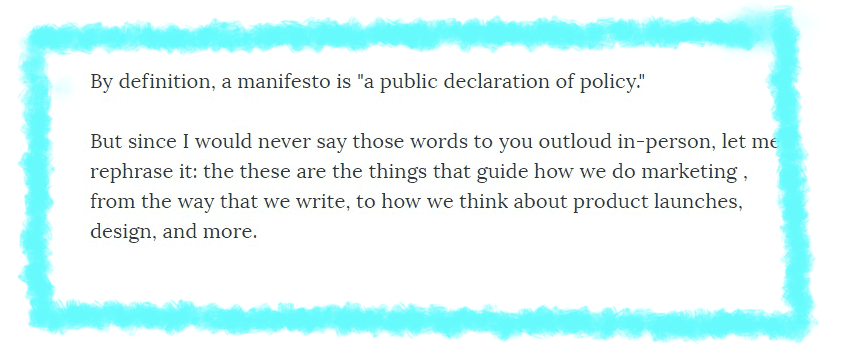
There are countless examples of this across their blog, but the other post I’ll draw from is Dave explaining why they threw out their lead forms and ungated their content.
He starts by reacting with shock to the proposal to throw out lead capturing forms; he loved figuring out how to get more leads through content upgrades and the like.
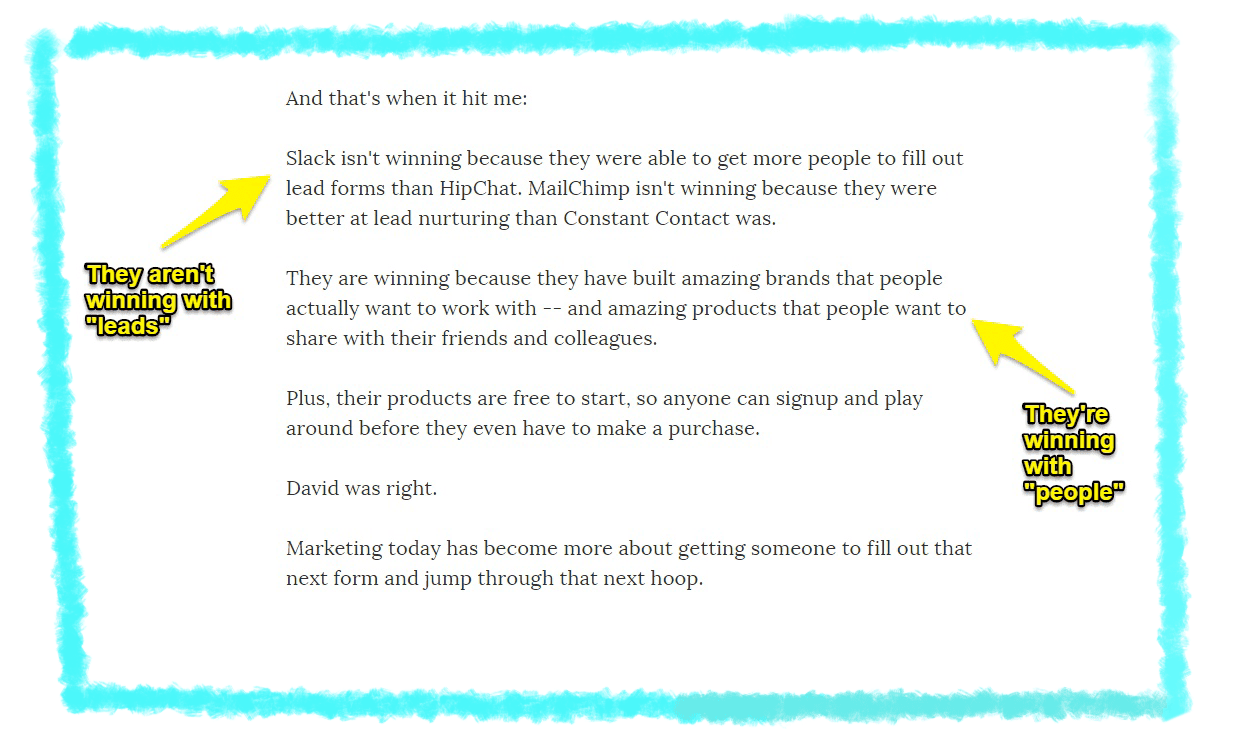
However, once he realizes that companies like Slack succeed because of their welcoming brand (with no gated content), he drops the word. Instead of “leads” he (and, by extension, Drift) talks about marketing to people.
The respect is given, and the copy assures the reader that Drift is serving their interests, rather than furthering their own.
Sales strategy
Drift primarily pushes their app on the blog using popups and links framed in the context of the post you’re reading.
The popup helps engage with their audience and answer questions while demonstrating the app in action.
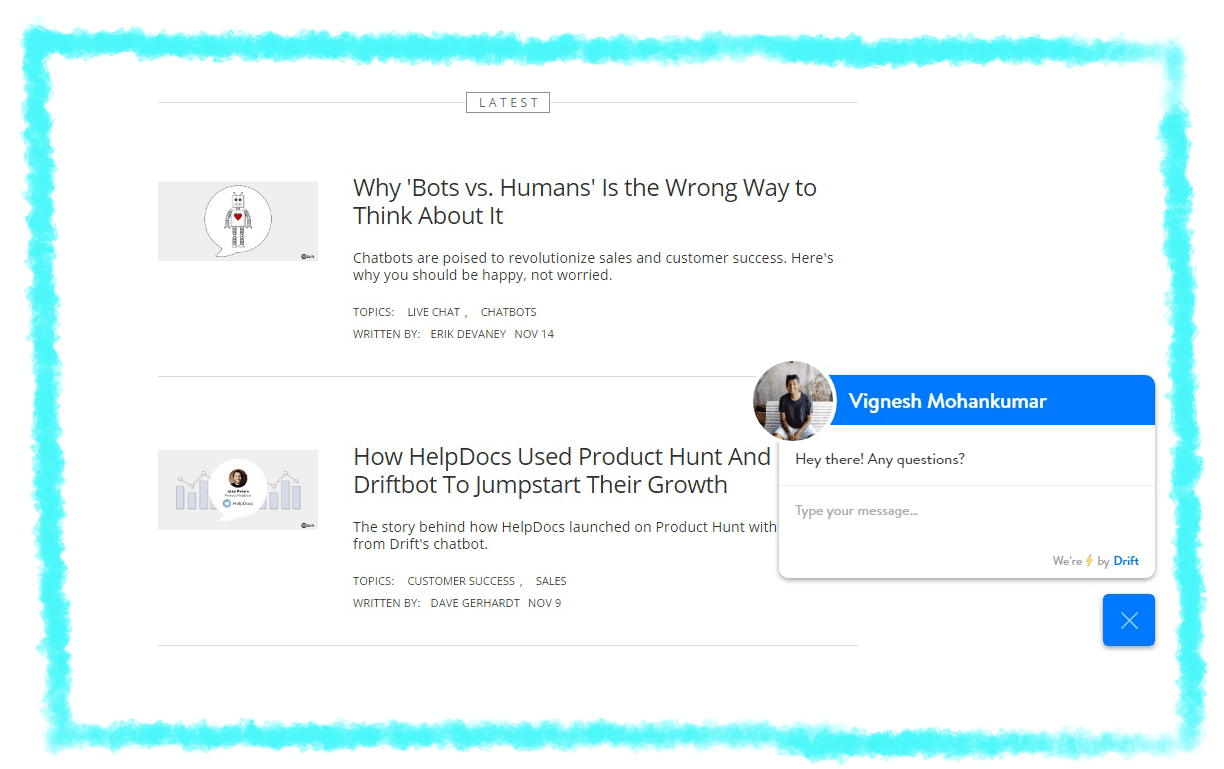
This also relates back to the idea of leads as people, as they’re reaching out to each and every person who is interested in the content they publish. This content in turn is highly relevant to their app users, allowing them to learn more about the best uses of the app.
Lead education
Drift educate their audience about their product by combining it with highly valuable content, again framed by their approach of talking to “people” instead of “leads”.
The Drift app is presented as the solution to the issues they tackle using a hyperlink in the same context as the post.
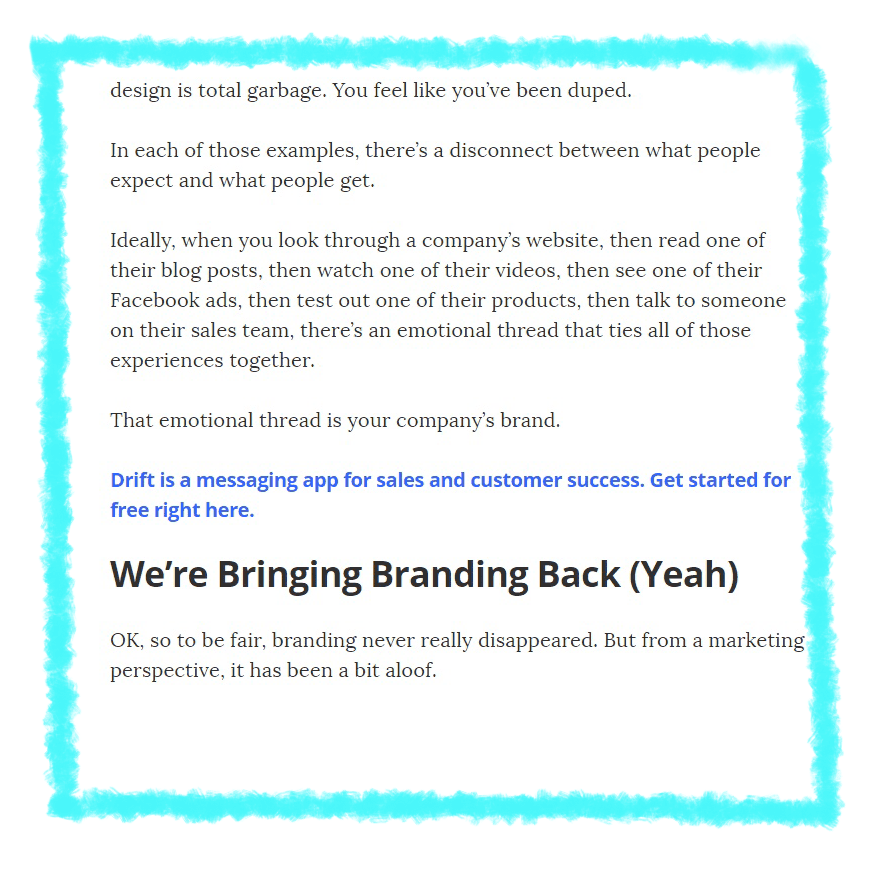
For example, after discussing how a content team needs to be kept aware of the rest of the company, they say hey, here’s a free messaging app to take care of that problem we just made you aware of!
At the end of every post there’s also an email capture form; they know that anyone who’s stuck around to read that far will be interested in the rest of their content.
Content which, in turn, exposes them to more valuable topics which are relevant to their own app; it’s lead education without the need to shove it down your throat.
Not only that, but posts are often framed from the perspective of the Drift team (e.g. how they’ve listened to customer feedback and shaped the product as a result). This shows them as knowledgeable about the topic, which is inherently projected on the app’s capabilities.
Finally, their blog also uses Drift to send a small push notification when users land on a page. The audience then knows exactly what the product looks like and how it works.
Combine that with writing on topics that will interest potential customers and advertising it in posts, and you have a potent mixture for conversion rate optimization.
Customer education
Whilst I’m on the topic of the Drift popup, it also provides a direct way for the Drift team to engage with both new and existing customers.
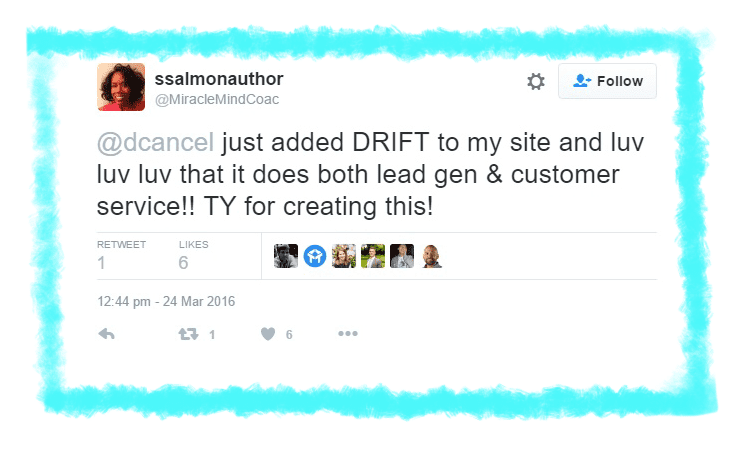
They are free to answer questions, discuss specific use cases, and seamlessly transition from lead education into relationship marketing (what I’m calling “customer education”).
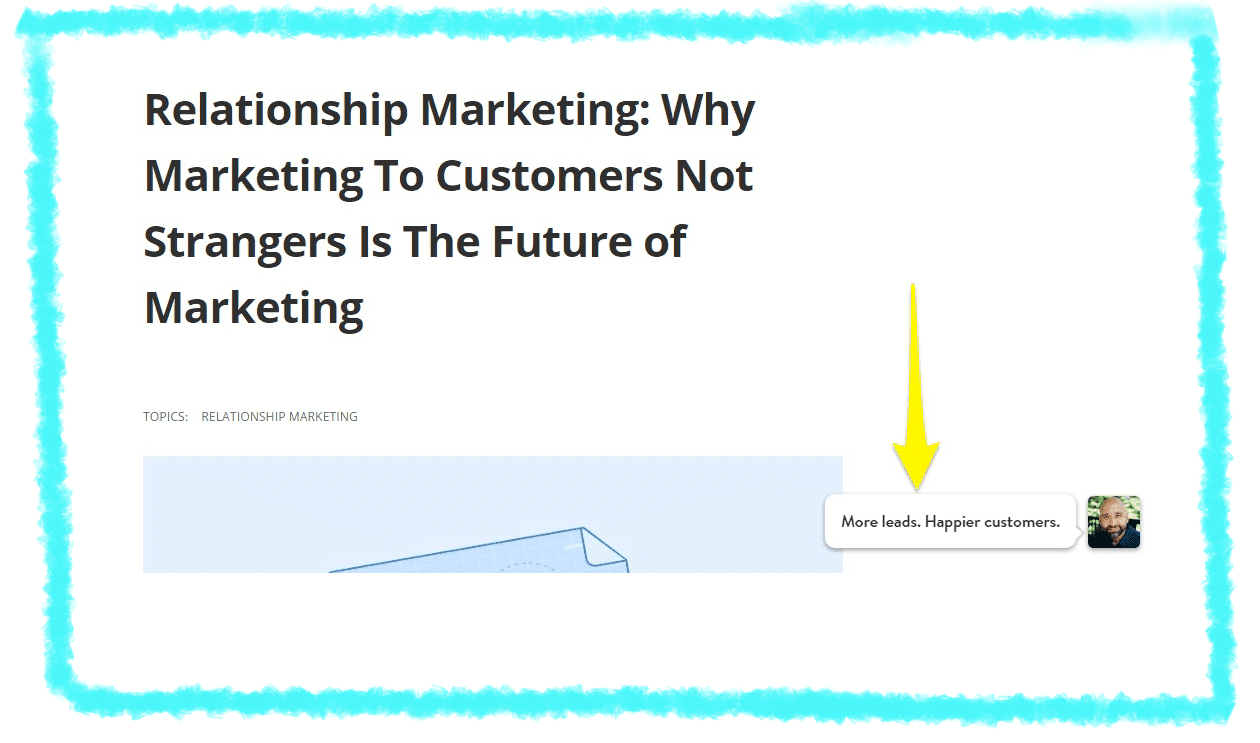
The keystone in Drift’s strategy is their heavy emphasis on “creating educational tools that will enable the customer to reach their desired outcomes” (source). In other words, by educating new and existing leads in the same breath (such as the Drift popup on their blog or their extensive knowledge base), they can ensure that the audience they hook is more likely to stick around.
Takeaways
- Write for humans. Write for engagement.
- Align your blog’s audience with your app’s target audience
- Produce quality content which also frames your product as the solution to many issues you discuss
- Demonstrate your app within your content using chat popups, etc.
Intercom
“What job do you hire a milkshake for?”
This question is at the core of Intercom’s product marketing – rather than marketing their product based on what they want to sell, they do it based on the jobs their customers want to fulfill.
This is the Jobs-To-Be-Done method, and was the inspiration for Intercom to four separate products; the Intercom platform, Acquire, Engage, and Resolve.
Each product (and the brand as a whole) is marketed based on the jobs that their customers need to do, and as a result, they have seen close to 5x growth in the two and a half years since implementing this strategy.
Tone of copy
Intercom’s copy reminds me of Hemingway. It’s short, sharp, and fulfills the job of the post as quickly as possible.
Not only that, but their content is formatted to be as scannable as possible – you can read only the headings, bullet points, quotes and images and still understand their message.
Their language is authoritative, but respects your time and intelligence. They make you aware of the kind of jobs your customers are hiring you for, but ties this back to the best use cases for their apps in the process.
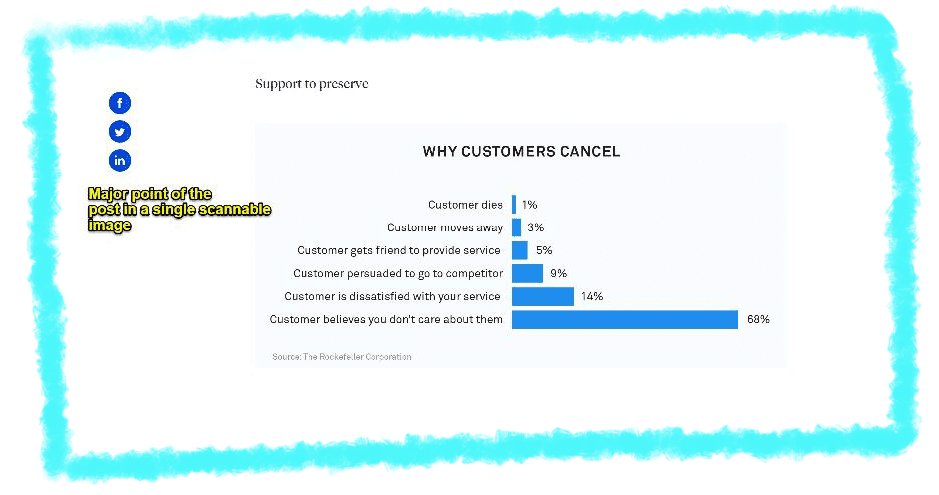
For example, take this post on how customer support fits your business. By scanning nothing but images, headlines, bullet points and quotes the reading time is cut to 30 seconds, and you still know that customer support converts free users, preserves all users, and can distinguish your company from the competition.
Now that you’ve been told what jobs your support needs to fulfill, you know exactly how to be using the Intercom app to get the most out of it, thereby increasing Intercom’s own retention.
Not only that, but the knowledge of the author and value of the post is naturally transferred to the Intercom app; it’s a mindset of “if they’re writing about this, then their app must be able to do what they’re talking about”.
Sales strategy
Intercom’s four products each have language tailored to fit the “job” that their customers hire them for. Not only that, but each product page gives an overview of the jobs which their products fulfill, rather than posing them as individual features.
Intercom’s Engage product is designed to help marketers and growth teams show users what the value of their new product is. It can help guide users through your onboarding process, send automatic emails and push notifications, target messages to be triggered at certain times or behavior patterns, and more.
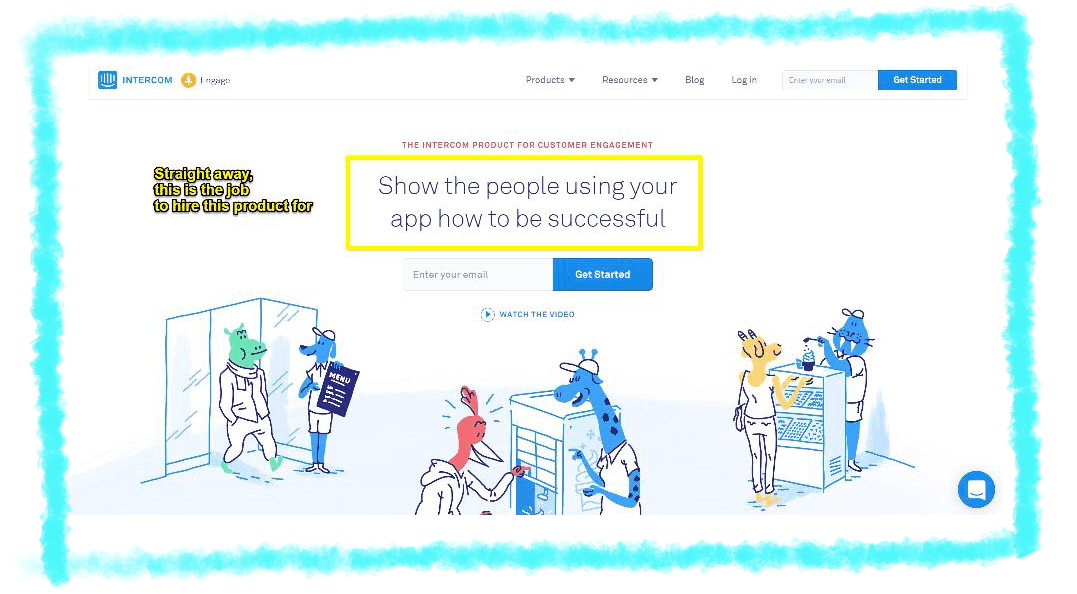
However, there are a slew of other products which can send push notifications. The Intercom team stand out by marketing their product as a solution, rather than a list of features.
For example, sending email and push notifications becomes the heading “leave no signup behind”, and targeted messages based on time or behavior is shown by saying “turn users into power users”.
Nobody who sees this product page can mistake what the product is best for, as the jobs that can be fulfilled have become part of the product marketing. This will even benefit retention, as no users who have seen this page will enter expecting it to fulfill a different role.
Lead education
Intercom’s blog writes on topics which are relevant to an audience who are likely to use their app. Not only that, but many posts have content upgrades at the end, as well as the typical email capture form.
In this way they accomplish the same as Drift in drawing in a relevant audience while keeping them aware of the product and its use in solving the problems they post.
For example, this post echoes Drift in that it’s posed from Intercom’s expertise in communication. Hell, the entire thing was sparked by a question from a customer, showing both that they listen to their users (increasing retention) and are knowledgeable enough to answer with authority.
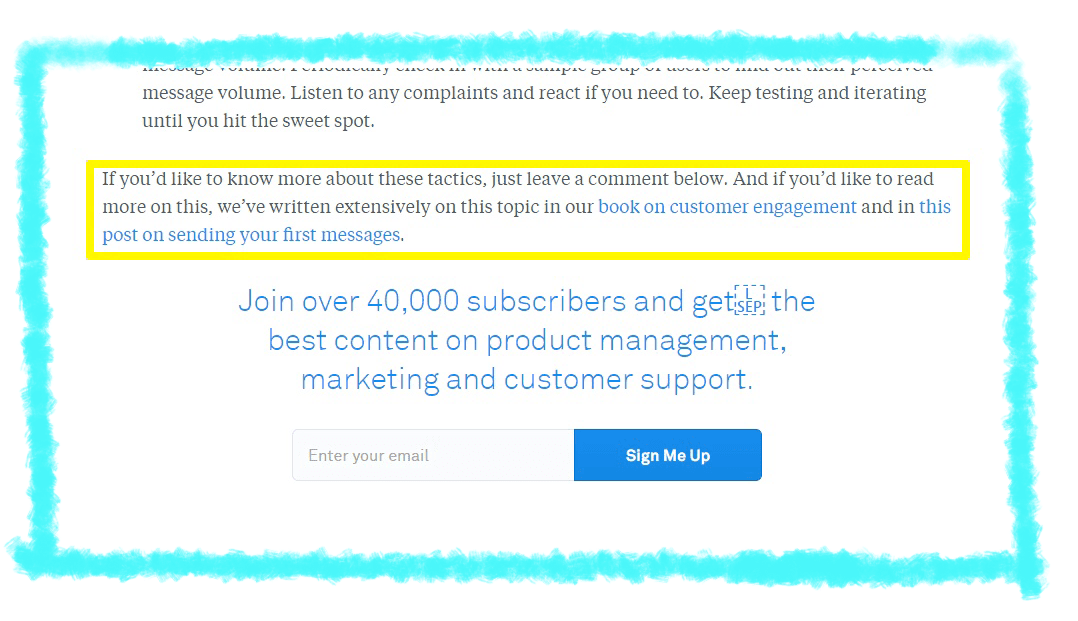
At the end of the post you’re also given the option to either read related content or access an ebook (gated behind an email capture form). Once again, all of this related content will further reinforce that Intercom are an authority on these topics and inherently give their users ideas on how best to use their app.
Customer education
Intercom does this to be presented as the answer to reducing churn, and at the same time imply that they’re very experienced in boosting their own retention rate.
Customers will therefore know how to get the most value out of the app, and stick around for longer.
Even in guest posts they mention how companies which switch from “ticket” to “conversation” support programs (such as their own) ‘achieved a net result of time, money, and sanity saved’.
In other words, if you didn’t believe Intercom when they were blowing their own trumpet, here’s a customer of theirs saying the same thing.
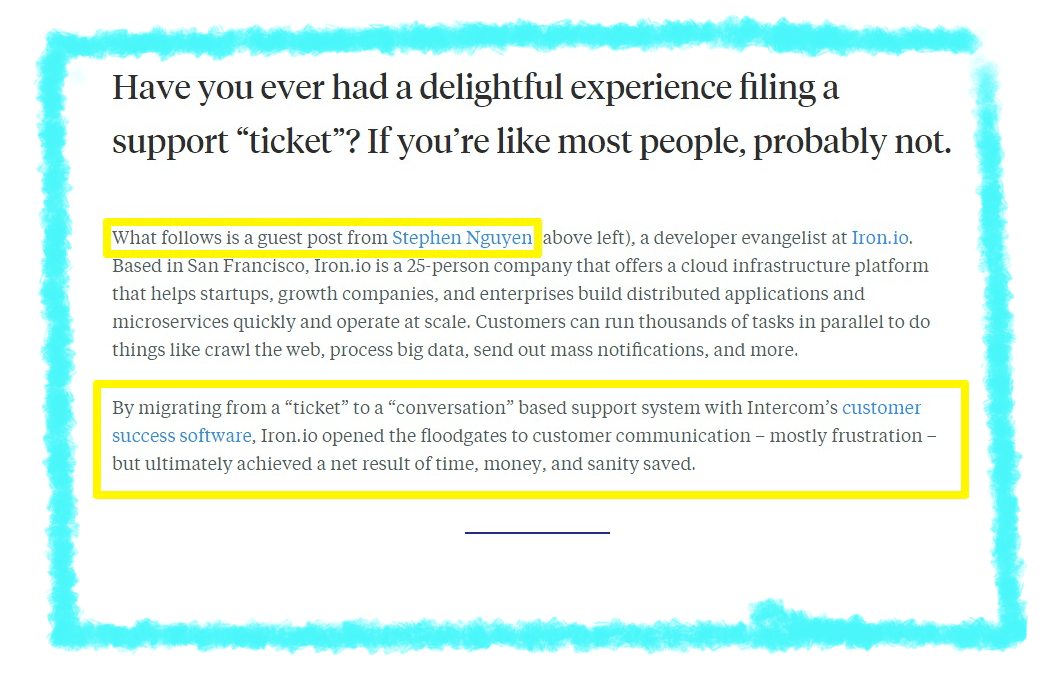
That same post also shows how the churn rate of the author’s company dropped drastically over the months as they used Intercom; the entire thing educates Intercom’s audience about something vital to the survival of a SaaS company, while yet again showing how their product solves this issue in action.
The final aspect of their customer education strategy is once again similar to Drift; they have a highly valuable knowledge base which ranks separately in Google. This enables users to quickly and easily educate themselves on what Intercom can do, how best to use it, and (at least with common problems) how to solve any difficulties they come across in their use.
Takeaways
- Know the job your customers are hiring you for, and factor it into your marketing
- Encourage your readers to engage with more relevant content, all while promoting your product within said content
- Increase engagement with your content (and therefore your app) using things such as estimated reading times and progress bars
- Have guest posters also attest to features of your app being the solution to common problems in your sphere
- Always ensure your content is valuable
Process Street
Back at Process Street, our product marketing is focused around the idea that every process can be improved, which goes hand-in-hand with our checklist app.
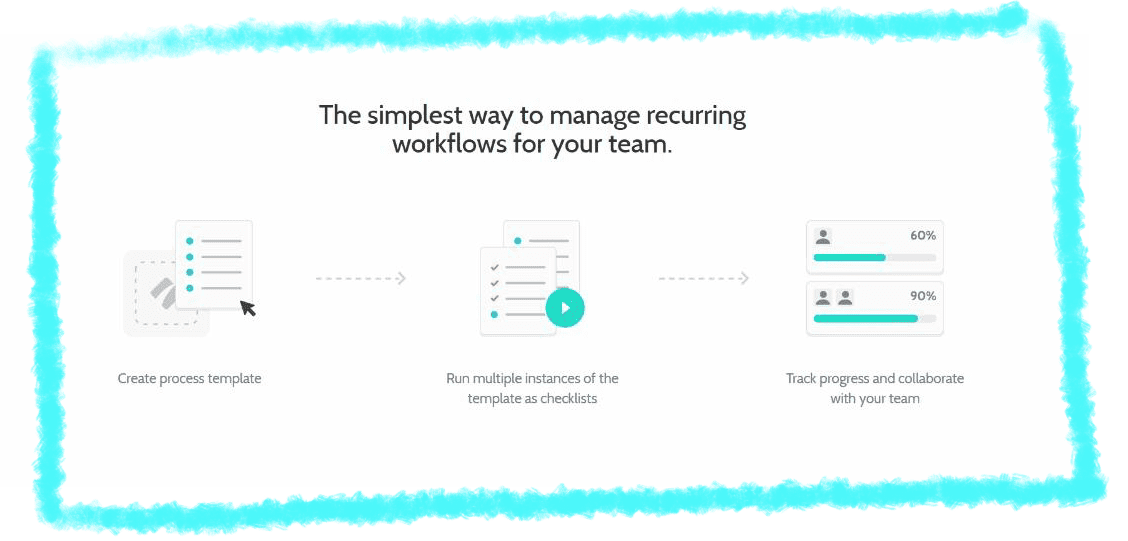
Be it documenting processes, tracking the progress of runs, or periodically updating guidelines, we’re all about efficiency and visibility.
This, much like Drift and Intercom, is something which we demonstrate through every aspect of our product marketing, down to the last piece of customer support.
Tone of copy
Our team focuses on the scannability and value of posts above all else. To this end, we go for a similar approach to Intercom with Hemingway-style copy.
Not only that, but we’ve taken a little inspiration from people such as Neil Patel, in that we’ve started to break up our paragraphs wherever possible.
If we can make our point within a sentence (like right here), we do it.
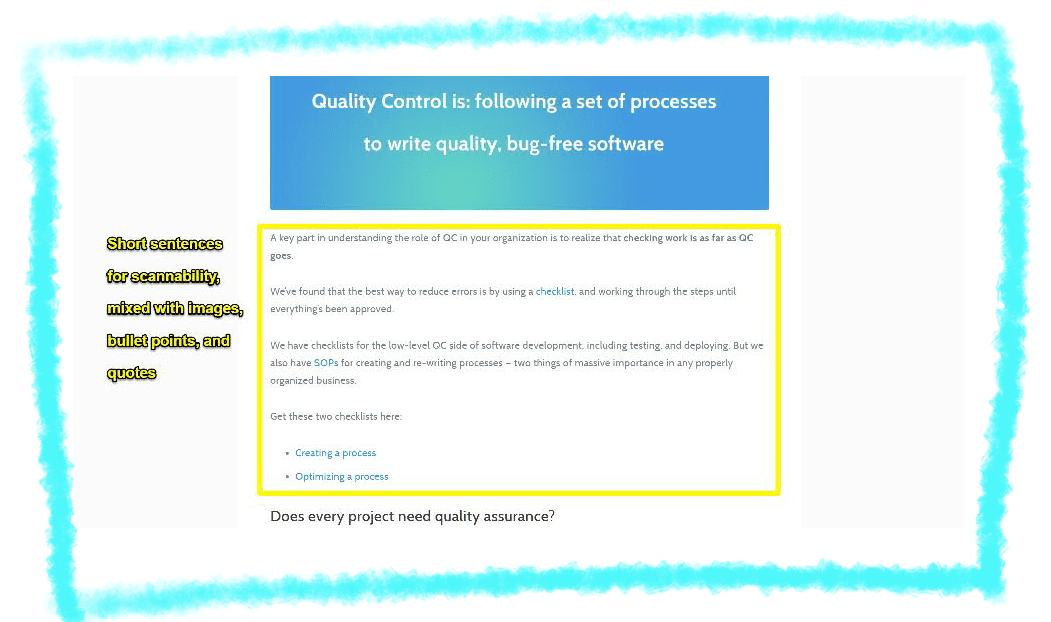
This encourages readers to scroll further down posts, boosting engagement and the % of content the reader will see.
Not only that, but we use quotes, bullet points, images, and subheadings to break up our content even further. The philosophy here is that the reader should be able to understand the points you’re making without reading any body text.
Combine the scannability with a frank tone that tries to cut the clutter and read as we talk, and you have posts which both grab the reader’s attention and retain it for longer.
Sales strategy
As with Drift and Intercom, the Process Street blog is used to promote the app by writing on topics relevant to our app’s audience.
We’ve written on everything from business process automation to how to prioritize tasks, and more. Every article goes towards selling the team (and therefore the app) as conductive to a highly efficient workflow.
Want to know how to improve productivity or sort out your daily routine? Not only does the blog have you covered, but our premade templates (processes that are ready to use) are optimized to rank separately for useful keywords.
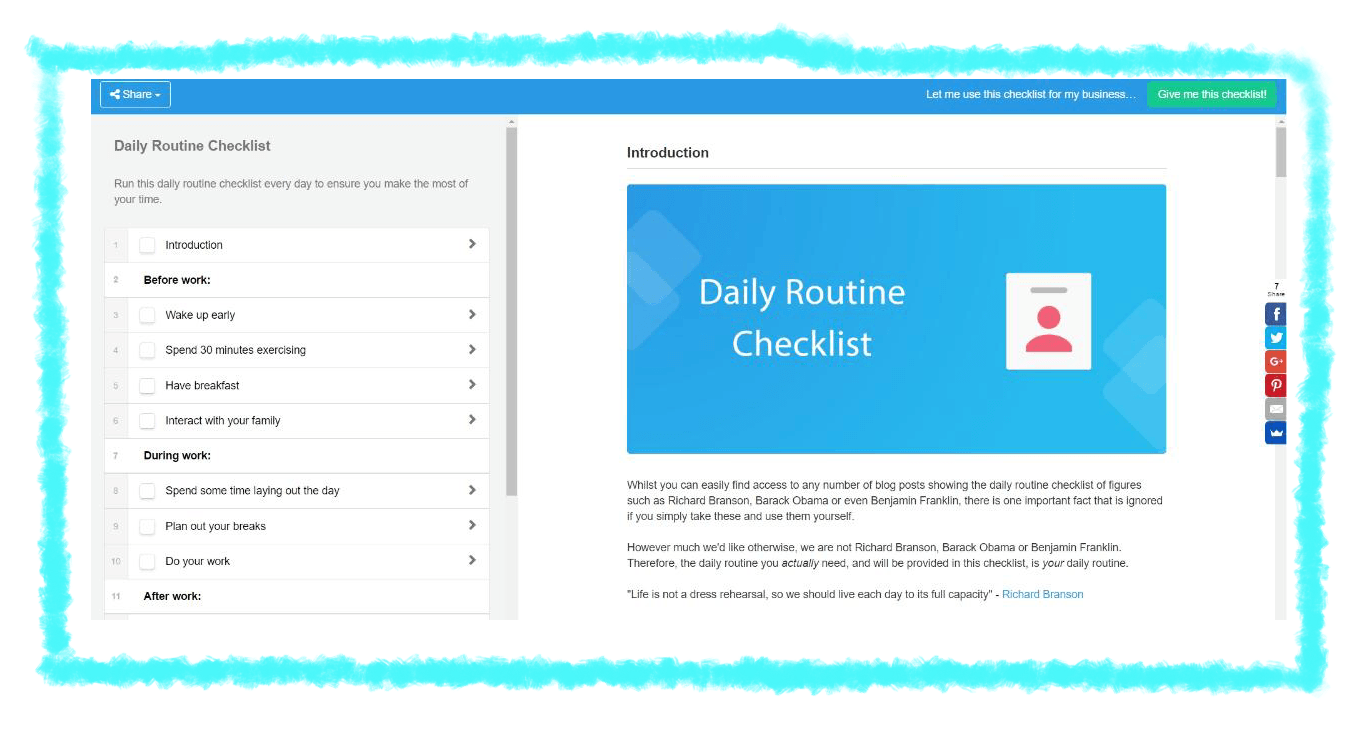
Not only that, but these templates can be made and shared by anyone. We embed them in our posts to demonstrate the app, but our users can make their own processes public too, and can even content lock them on their own blog.
Finally, by using Intercom we can see when a user expresses interest in a paid plan or is curious about the app and could use a demo. Our support process then feeds these tickets to our sales team, letting us capitalize on every opportunity.
This and more is all powered by processes we’ve documented using our app, meaning that every member of our team is fully familiar with the product and can show off the most valuable aspects of it, in turn increasing the retention of users who are introduced to the app.
Lead education
Every couple of weeks we aim to release a template roundup post. These act as a landing page of sorts for the public templates, linking back to them while targeting a bigger keyword with the post.
Combined, this covers a huge number of relevant keywords (both short and long tail) while providing enormous value and demonstrates the best use cases for the app.
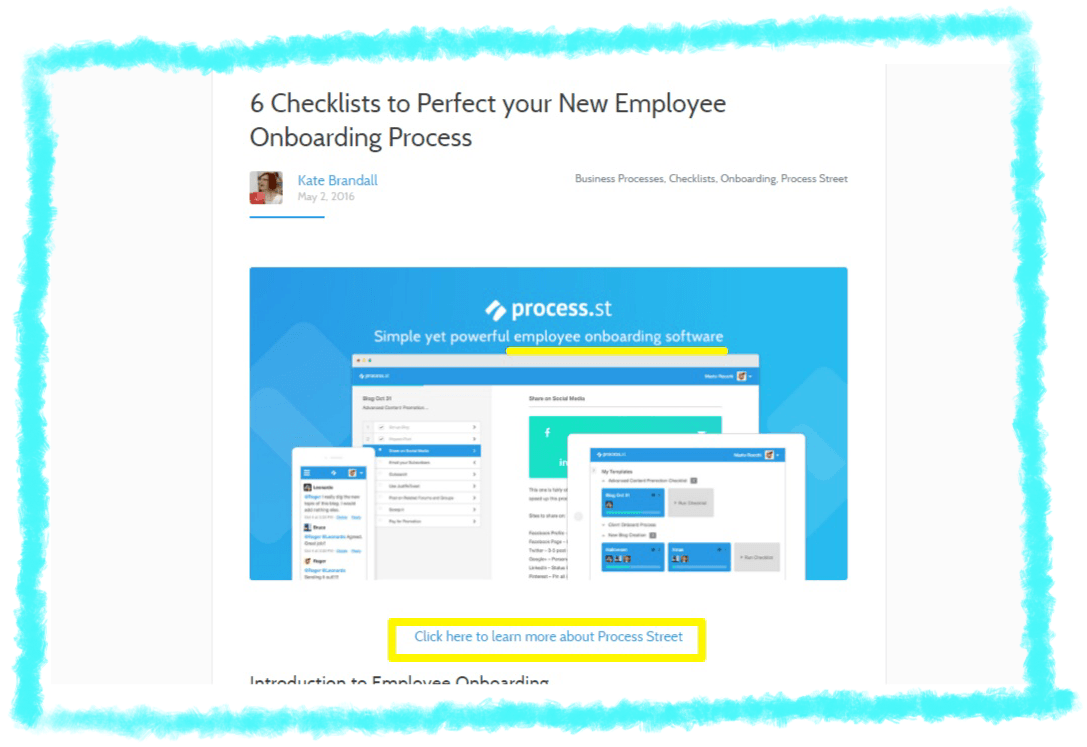
The templates’ existence in the first place demonstrates to our audience what the app is capable of. It’s a win for all parties, with each side providing value to the other.
Our series on business process management is another good example – here we explain a complex topic which is incredibly valuable to the reader, while also showing how useful our app is for the process (eg, through embedded templates).
The final method of product marketing we use primarily for lead education is producing ebooks. By tackling topics such as customer success and churn, we draw a lot of attention and emphasize why the processes behind these issues need to be documented, tracked, and improved.
Customer education
The ebooks also educate our existing customers about what Process Street can do, how to do it, and why they should be doing it. This greatly increases customer engagement and retention (purely because they know how useful the product can be) and even saves our support team a headache.
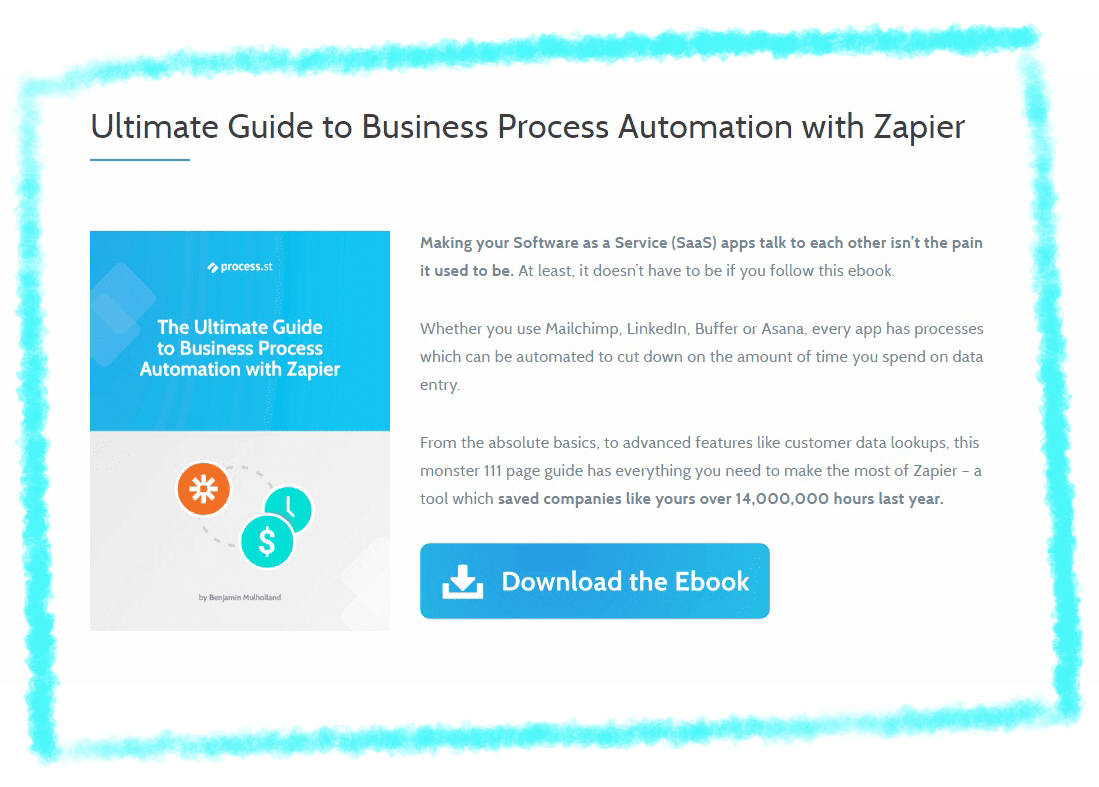
We also have a knowledge base, although admittedly it’s currently being updated. With instructions on all features of our app, video tutorials, screenshots, gifs, etc., we can show how to get the most out of the app without having to wait for a support conversation.
This along with carefully planned emails greatly helps combat our churn rates, as any basic issues are easily searchable.
Not only that, but the help articles are put through our SEO process to bring in a little traffic; traffic which will be familiar with at least a feature or two of the app before ever having touched it.
Takeaways
- Constantly reinforce the core idea of your product by demonstrating it in your writing.
- Produce ebooks or skyscraper content on topics which your app can excel in.
- Teach users how to use your app through this free content, at the same time as giving general value.
- Begin with thorough Keyword research, and a keen understanding of link building’s role.
- Focus on building knowledge bases as they are great for both customer and lead education (especially if each post ranks separately in Google for useful keywords).
SumoMe
SumoMe follows the trend of putting the customer at the front of their product marketing strategy, and see a similar boost to the other companies in terms of retention.
They do this mainly by using their blog to display general interest content, along with tutorials on how exactly to use the app to achieve this.
Whereas Drift and Intercom usually imply that their app solves the problems they talk about, SumoMe lays out exactly how to do it as soon as you read the post.
Tone of copy
If you haven’t guessed already, SumoMe uses the same direct language as the previous companies. They know that the best results come from delivering value as quickly as possible, so any fluff is cut out.
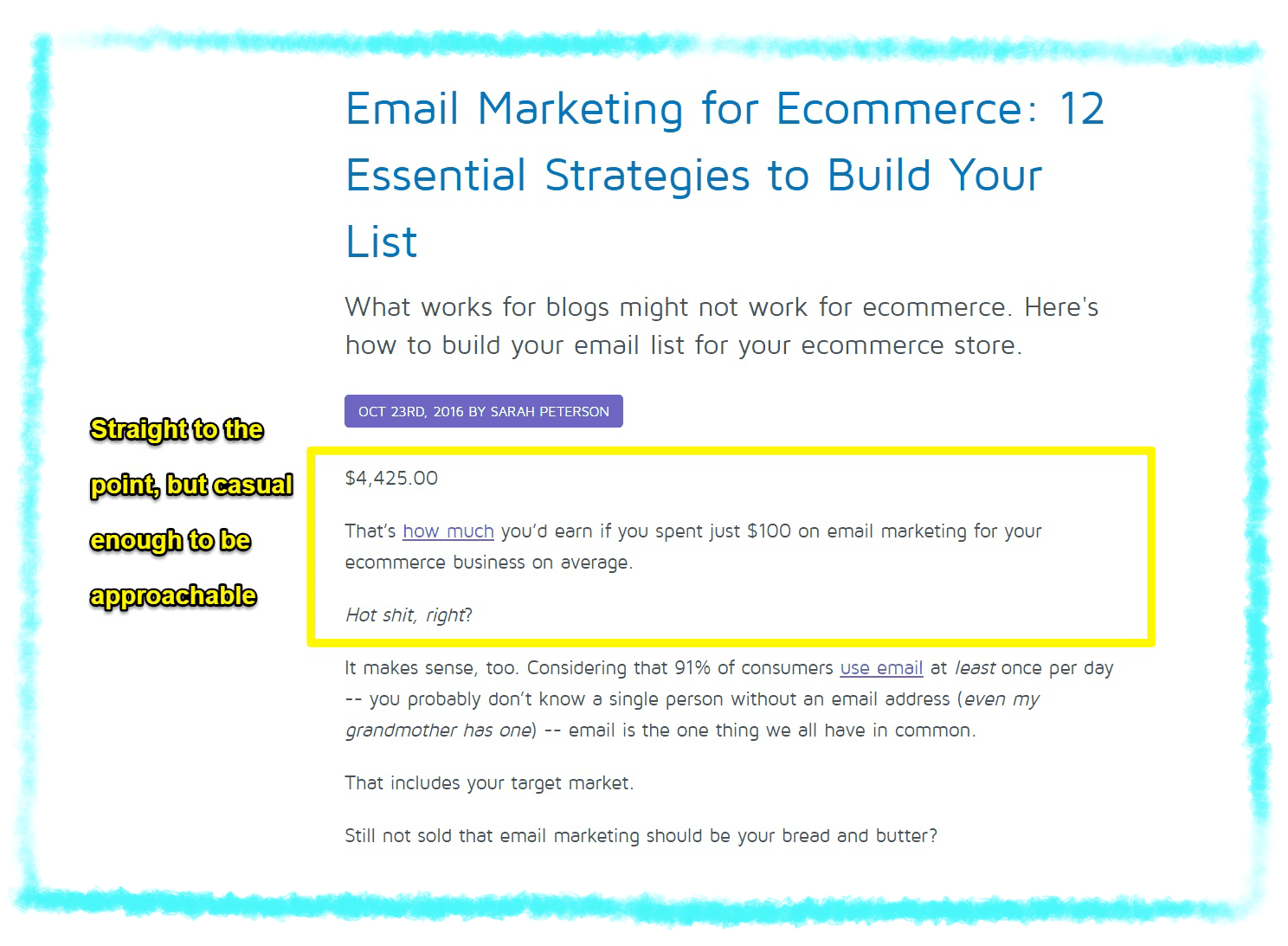
Their content usually carries a casual tone though. For example, they aren’t opposed to swearing to give their point an extra punch.
In other words, this gives the impression that their content is one person talking to another. It engages the reader by connecting with them, rather than purely relying on their interests and thirst for knowledge.
Not only that, but their content is highly scannable. It’s rare to find a post which has any single-page spread which is nothing but body text; there’s always an image, bullet points, a new heading or even just a bolded segment.
This keeps the reader engaged, exposing them to a greater span of the post and, in turn, educating their audience even more about how their app can solve these problems.
Sales strategy
Along with promoting their app in blog content, SumoMe have a bit of a unique take on their product page layout.
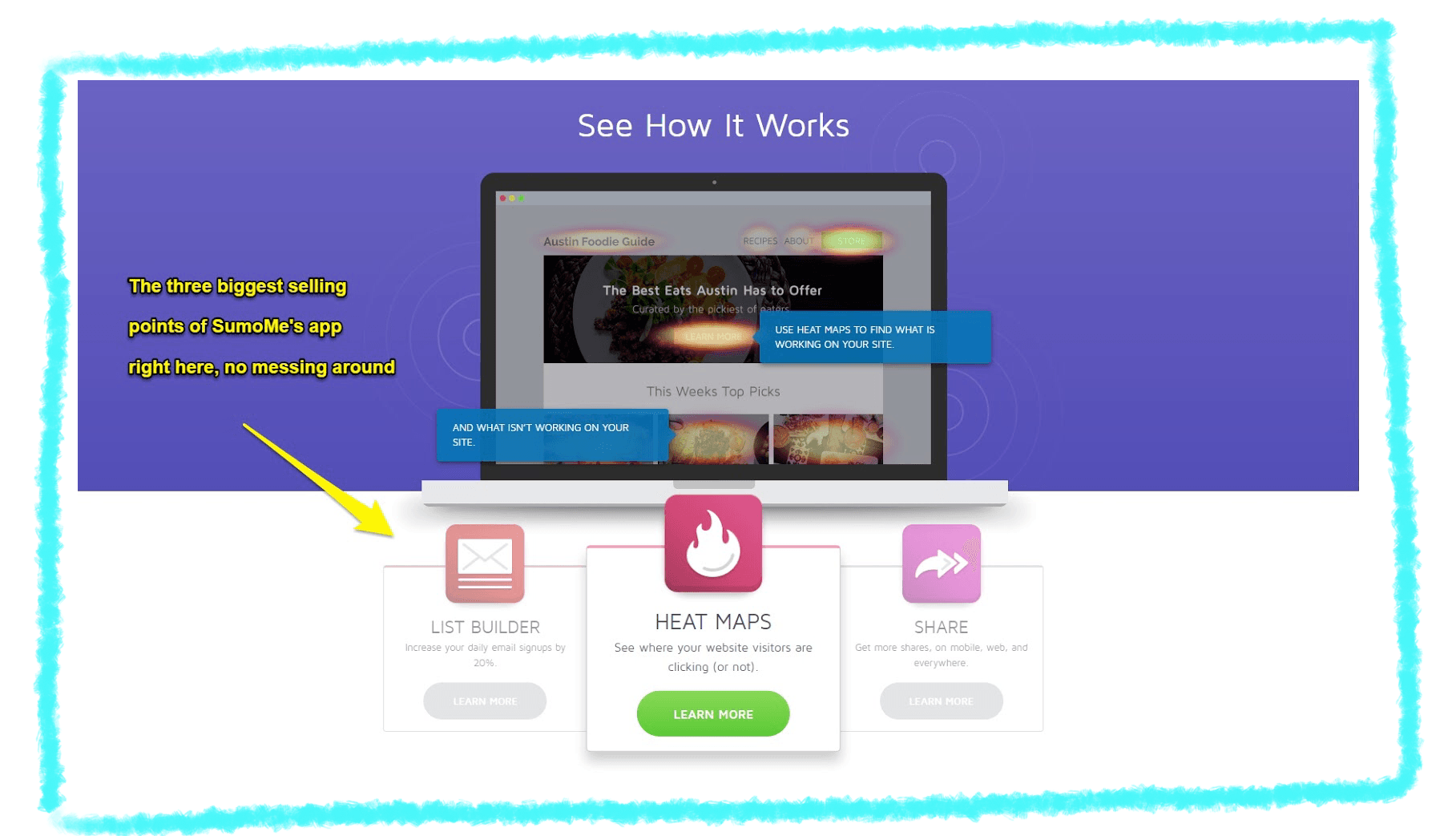
The core app’s value is promoted in as little space as possible, with their three biggest features (heat maps, list builder, and share interface) as the main hook. No time is wasted, meaning the path from fresh lead to new user is at a minimum.
The more in-depth features, however, are promoted as separate tools further down the page. If the initial features didn’t sell you, these are laid out to hammer home the value of the product and give users a full picture of what the app can achieve.
Lead education
As with the previous companies, SumoMe starts their lead education using their blog.
They educate their leads by promoting and showing off the product, but by also lowering the friction between the user and the benefits they display, they boost their own retention rate too.
For example, they write on popular topics like growing website visitors and in the process expose leads to a partial tutorial on how to use their app.
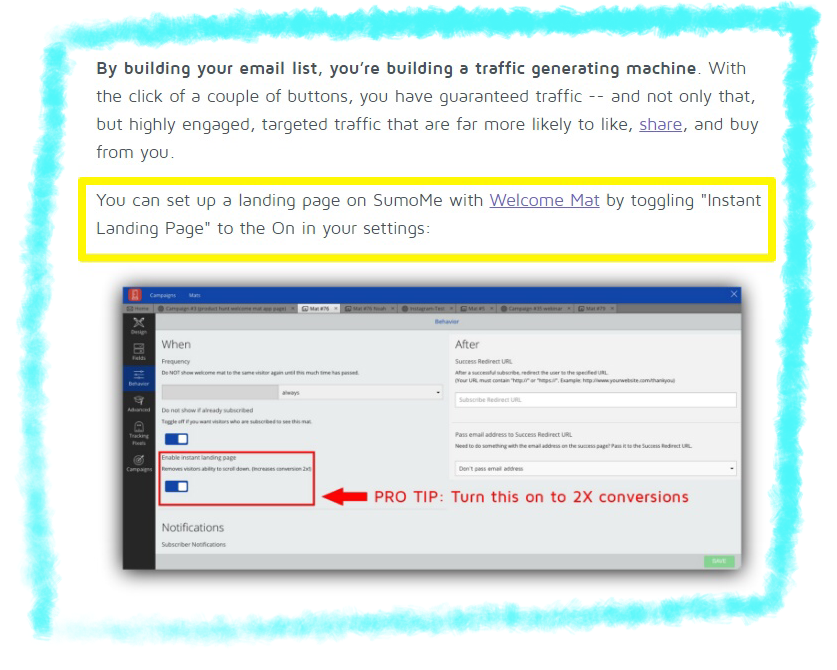
In this sense, their onboarding process begins before a user even logs into the app.
On top of that, they also have ebooks with email captures and content upgrades at the end of each article, meaning that leads are hooked, captured, and educated in the same fell swoop.
Customer education
SumoMe joins in with the previous companies in its use of a knowledge base, yet while the help documents are most certainly comprehensive, there is very little focus on utilizing it to advertize to leads in the same breath.
This isn’t necessarily a bad thing, as it means that the help articles have a narrower focus, and the extra detail on the app in their blog provides a high base level of knowledge for their readers to support this.
In short, SumoMe uses their blog to span their marketing, sales, lead and customer education, while other sections of their site are more supporting aspects.
Takeaways
- Brevity is vital
- Being frank (e.g. swearing) can stand out and endear audiences, if used in moderation
- Blog posts can be used as pseudo-tutorials to fully show off your app
- Knowledge bases, content upgrades, and email captures are pretty much a must by this point – did you not see the last three entries in this post?
There we have it. Although all four of these SaaS companies have common aspects, each has a content focus which they utilize to show off the strengths of their app.
Still, let’s recap:
- Align your blog’s topics with problems your product can solve
- Frame at least some content from the point of view of your team, and demonstrate your expertise to inspire confidence
- Build a knowledge base to both educate leads and customers, and push content upgrades
- Provide upgrades at the end of your posts to catch engaged readers
- Produce highly valuable content to make it worth reading and attractive
- Utilize keyword research and link building – if you can get your knowledge base articles to rank in Google, you’ll bring in highly targeted (and high conversion rate) traffic
Have any product marketing lessons of your own, either from your own team or from observing others? I’d love to hear them in the comments!





